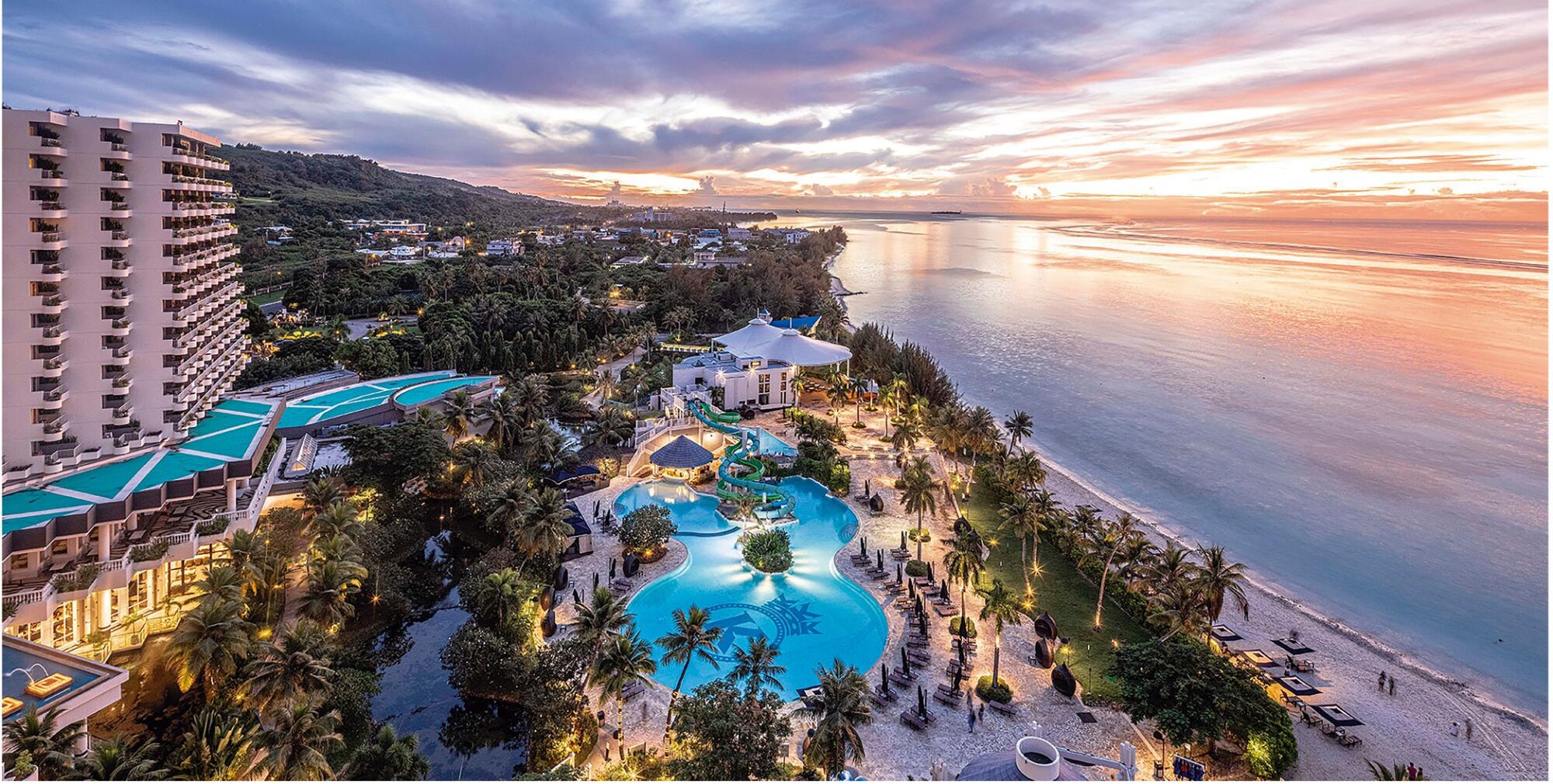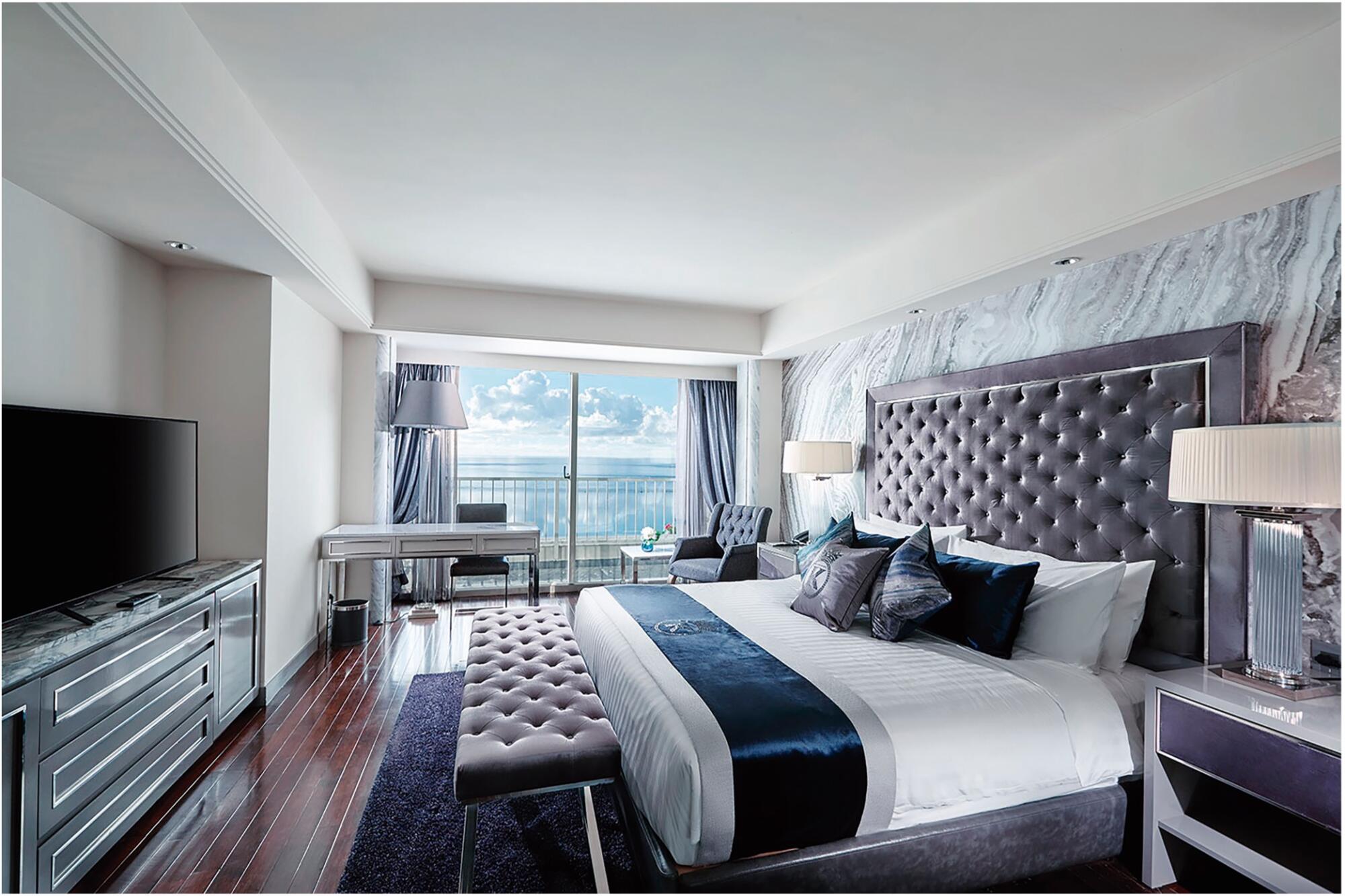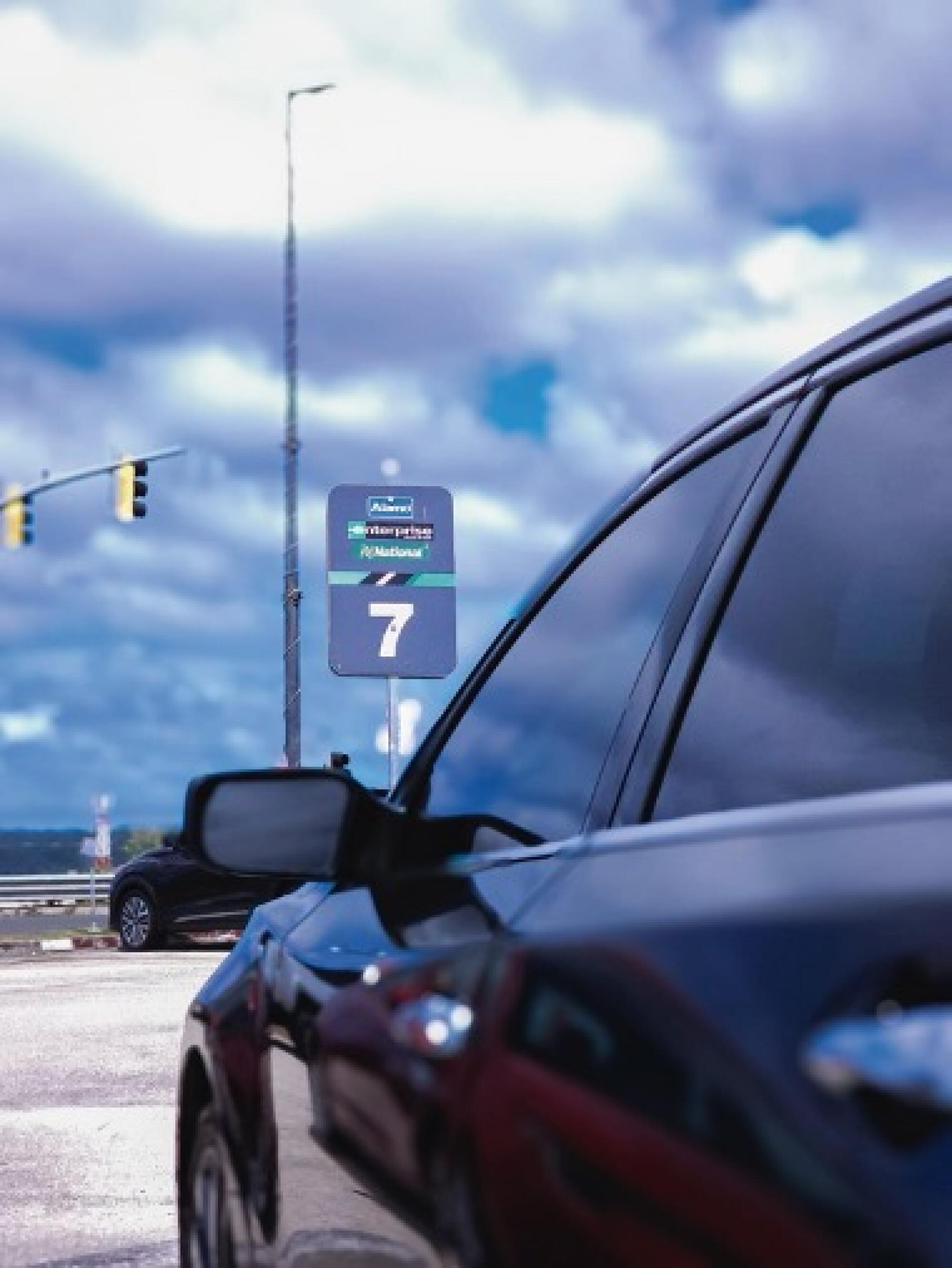
- Share via
Often described as “America’s best kept secret,” the Commonwealth of the Northern Mariana Islands is so much more than the U.S. backdoor to Asia. Combining a strategic location, unequal natural beauty and a rich-storied history, it can become the region’s preferred touristic destination and a key post for both military and civil business endeavors.
Being at the crossroads of Asia and America, the Commonwealth of the Northern Mariana Islands (CNMI), has been on the front line of geopolitics for over a century, and looking into the future, it certainly has plenty of potential as one of the most strategic locations in the United States of America.
In its long, disputed history, the 14-island archipelago has gone from being colonized by Spain, sold to Germany, ruled by Japan for over three decades and then liberated by the United States during World War II, when its Tinian military airport was one of the busiest in the world. In 1978, it became a commonwealth U.S. territory, with its residents being granted U.S. citizenship almost a decade later. Today, like in the past, the CNMI stands at yet another pivotal moment as it redirects its economic and military potential towards new horizons.
Following the economic crisis brought by the loss of its garment industry in the early 2000s, their situation was later aggravated by the COVID-19 pandemic, visa restrictions (particularly to Chinese citizens, who had visa-free access and made up the second largest tourism market) and the devastation brought by Typhoon Mawar in 2023. However, and indicative of their longstanding historical resilience, the CNMI has managed to surpass those crisis and now look forward to new opportunities that will guarantee a safer and more sustainable future.
Working hand in hand with the Commonwealth Economic Development Authority, (CEDA), the semi-autonomous agency in charge of providing financial and technical assistance for the creation or expansion of public and private enterprises in the islands, the CNMI has been proactive in pursuing industries and investments that strengthen its economy, while also profiting from their unique access to the burgeoning markets of the East and the security brought by U.S. regulation and its standards of excellence.
“Our main asset is our natural and cultural wealth, but we are seeing growing interest in sectors other than tourism and are eager to hear new ideas,” stated Manuel Sablan, executive director of CEDA and one of the leaders involved in the drafting of the Commonwealth’s 1976 covenant with the Federal Government. One of the most promising sectors is infrastructure with a projected $5 billion investment from the U.S. military in Tinian’s Air Force infrastructure. This will include future repairs to Tinian’s dual-use port as well as road upgrades occurring in Saipan. Infrastructure investors are weighing CNMI as an alternative to Guam’s saturated market and expect it to become the next U.S. strategic base in the Pacific.
Meanwhile, telecommunications companies are looking to the Marianas as a solid base for IT and data center development especially with the recent announcement by Google to run a direct fiber-optic cable into the CNMI, the Proa undersea cable, which is part of Google’s $1 billion investment to expand the Pacific Connect initiative that will connect Guam, CNMI and Japan.
By creating new fiber-optic routes between the continental U.S. and Japan, these cables will improve the reliability and resilience of digital connectivity between the two countries and within the countries and territories of the Pacific Islands, a key condition for boosting existing businesses and establishing new ones around technology and innovation like additive manufacturing.
Additionally, new investment in aquaculture will see the construction of a dome for farm fishing, as well as a potential project for growing edible seaweed aimed at the demanding Japanese market. “The possibilities are endless,” added Sablan, “and we are doing our best to make all great ideas into realities that bring real returns to investors and long-lasting benefits to our community.”
One way CEDA has managed to achieve this is by promoting the CNMI brand in global events such as the Select USA Investment Summit, spreading the word on what the Northern Mariana Islands are about: a 14-island archipelago of possibility.
But CEDA’s efforts go well beyond promotion, with a corporation division dedicated to private sector development and offering direct financing through pilot loan programs; and a Banking Division dealing with government and public sector activities, coordinating public borrowing from agencies, municipalities, and public corporations through bond and bank financing.
The Qualifying Certificate Program (QC) and the Opportunity Zone (OZ), offer tax incentives in exchange for investments in the CNMI that are proving vital in attracting investments to the Marianas. Beyond having access to federal funding and the ability to control its tax regime, the CNMI also enjoys a Jones Act exemption, which has historically cost similar economies such as Hawaii over $1.2 billion. “Our independence in this sense means investors can expect a high level of commitment from the government, and if you have the expertise, we are ready to partner with you and transform the Mariana Islands together,” said Sablan.
There is also great potential for further developing the tourism industry, CNMI’s main economic driver, thanks to its unique blend of pristine beaches, spectacular caves and tropical lands perfect for all types of leisure activities and sports; well-preserved indigenous traditions dating back 4,000 years, like their open-sea celestial navigation in proa boats and history-rich sites from their diverse colonization periods, from prehistoric stone structures or latte stones to World War II shipwrecks and airfields – one of which is the site from where the atomic bomb carrier Enola Gay was launched – all in a friendly and safe environment governed under U.S. law.

Beyond these natural and cultural wonders, CNMI’s hospitality sector is another attraction in itself, with a wide range of accommodations suitable for all budgets. At the highest level, inspired by the majestic profile of a luxury cruise liner, Kensington Hotel Saipan stands out as the island’s only all-inclusive luxury accommodation, where every single detail has been carefully chosen to fulfill the highest standards and accommodate their guest’s specific needs.

Overlooking the pristine beaches of Saipan’s northern coast, the resort offers 313 luxury guest rooms perfectly suited to both leisure and business travelers; four restaurants and two bars with master chefs guiding guests through exquisite gourmet journeys; exclusive facilities like their private beach, where guests can relax or enjoy water sports such as kayaking, paddle boarding, and their signature sail boat, plus a diverse collection of pools, specially-dedicated game areas for adults and children, and two event halls perfectly adapted to luxurious or more casual events.

Another company that occupies a distinguished place within the industry is Emerald Pacific, the franchise operator of three global rental companies: Alamo, National and Enterprise. With a fleet of hundreds of cars and locations in the CNMI, Guam, Palau and Cebu Island, they cater to all types of customers. Alamo for its leisure business aimed at tourism, National Car Rental offers corporate and federal government clients and Enterprise Rent-A-Car rents to wide range of customers, from local families and businesses to the U.S. Military, since they are the only rental car company currently located within both the Navy base and the Anderson Air Force base. They have become an integral part of the CNMI’s tourism industry as well as part of its local and military life, with a vision not only for business but also for playing a vital role in the community’s future.
Although the tourism industry was hit hard by the pandemic, in the last couple of years it has started to recover, with visitors doubling in January 2024 compared to the same period last year. However, since numbers are still low in relation to pre-pandemic indicators, the government is trying to build more ties with both longstanding and new partners. As CNMI governor Arnold Palacios recently said, “We need sustainable partners like Korea, Japan, Taiwan, and India. We need to put together a policy of 40-50 year stable investment and relationships with friends of the United States.” Being in a part of the world whose strategic location and remoteness has set its own particular challenges as well as opportunities, we are sure the people of the CNMI will continue showing incredible resilience to adapt and thrive, as they have done for thousands of years. After all, this is what the Northern Mariana Islands are about: a fourteen island archipelago of possibility.